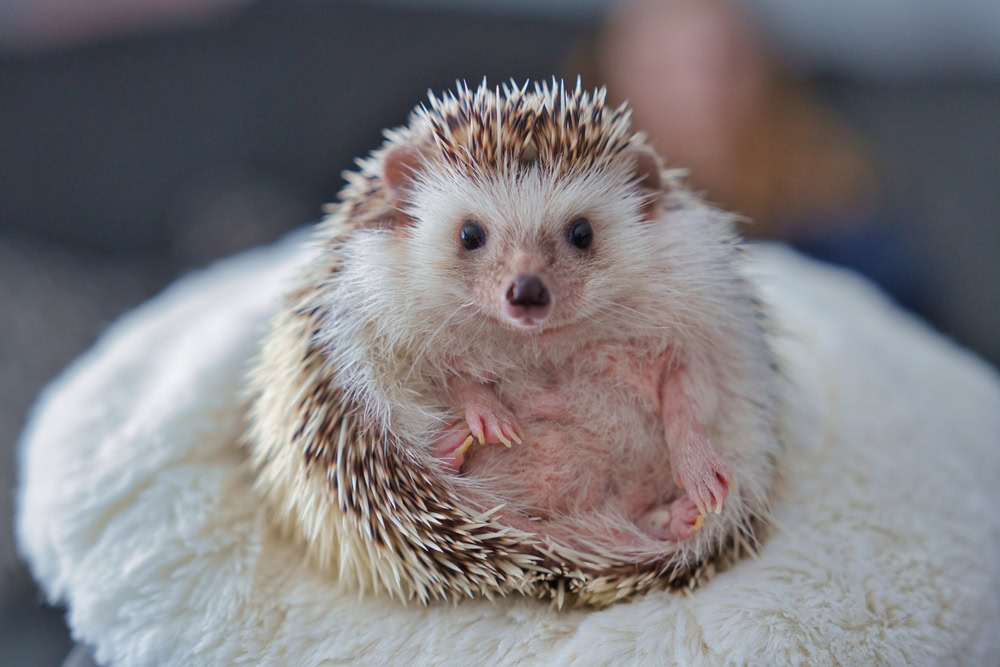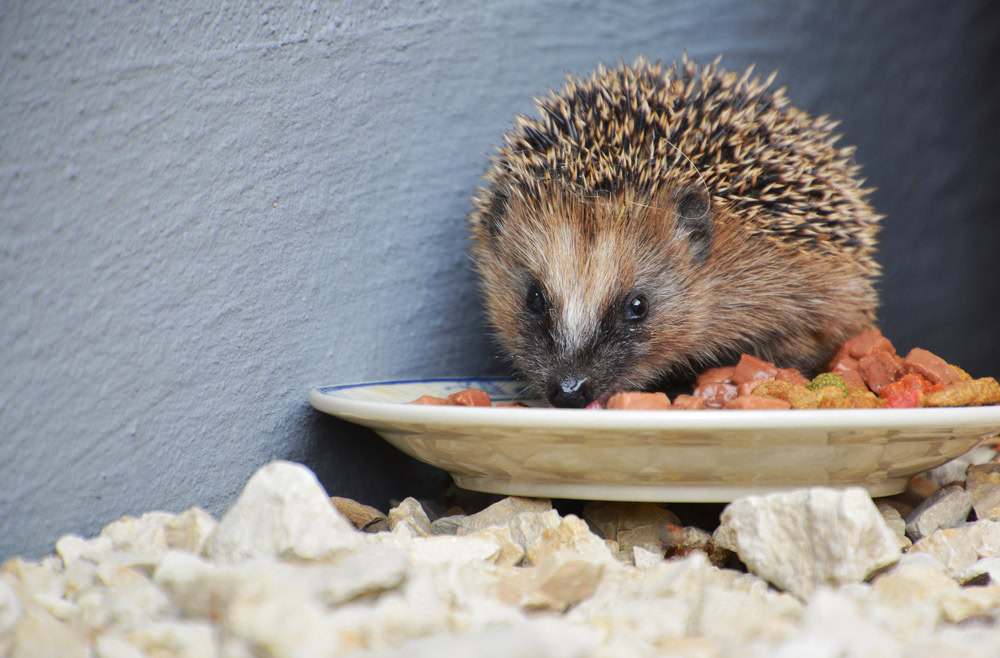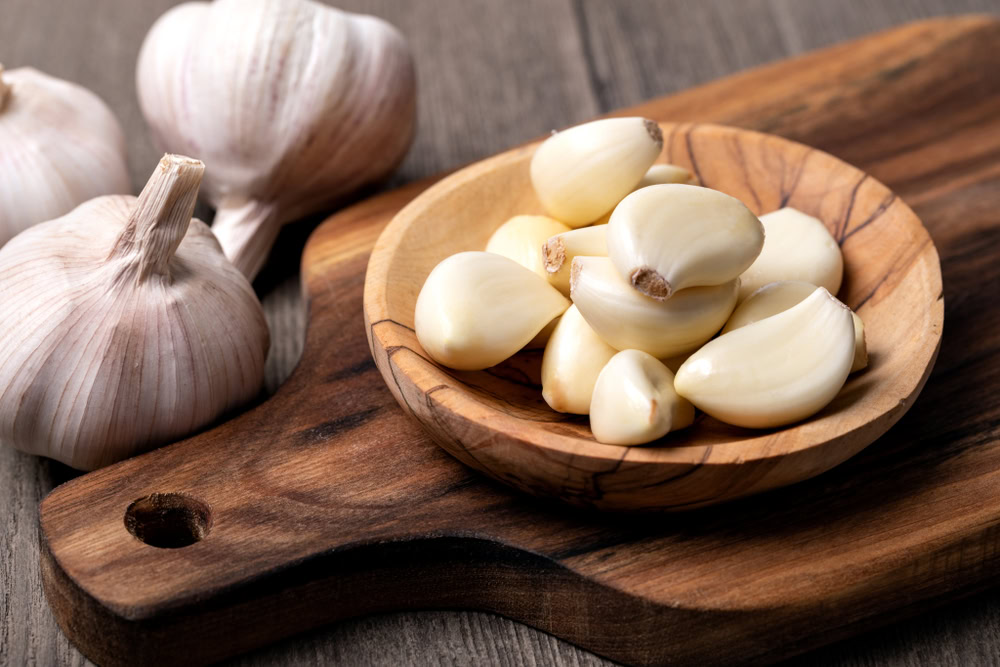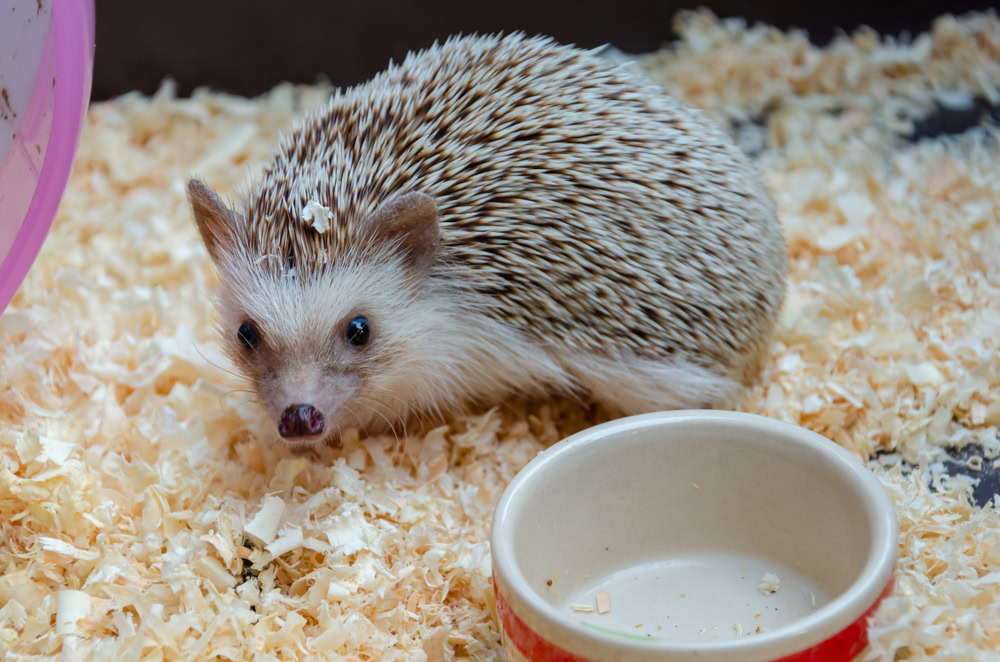VET APPROVED

The information is current and up-to-date in accordance with the latest veterinarian research.
Learn more »Click to Skip Ahead
Over the last thirty years or so, keeping hedgehogs as pets has become increasingly popular, particularly in the US. Being an exotic species, there is still a lot to learn about their care, husbandry, health, and suitability as pets. There are 15 hedgehog species native to the European and African continents, although there is some debate among taxonomists over whether the number of species is more or less than this number! Additionally, the European hedgehog (Erinaceus europaeus) has become an invasive pest in New Zealand, where they were introduced in the 1870s to help European settlers feel at home but now threaten the populations and natural habitat of native animal species.
The most popular species to be kept as pets is the African pygmy hedgehog (Atelerix albiventris), also known as the white-bellied, four-toed, or central African hedgehog, and the morphologically similar north African or Algerian hedgehog (Atelerix algirus). Hybrids of the two species are also common, and it may not necessarily be clear which particular species we are dealing with. Fortunately, the two have similar requirements.

Hedgehogs As Pets
With their compact size, softer quills, and adorable furry faces, African pygmy hedgehogs are often mistakenly referred to as domestic pets. Domestication is a process that occurs over hundreds, even thousands of years, where the animal species adapts and evolves to life in human care and captivity, as can be seen in dogs, cats, and cattle, for example. Most exotic species that are kept as pets are essentially wild animals that have been tamed through captive breeding, and their care is very different from that of a domestic pet.
Owning a hedgehog is illegal in several US states, including California, Georgia, Pennsylvania, and Hawaii, while other states allow them with the appropriate permits. Many animal welfare and wildlife groups are opposed to keeping hedgehogs and many other wild animal species as pets, and we always recommend researching the keeping of such animals before being tempted by the overwhelming cuteness that is the African hedgehog.
If you do have a pet African hedgehog, you are going to need to know what, how much, and how often to feed it. The following guide will help you with just that.

Hedgehog Feeding Chart & Guide
You should feed your hedgehog once a day, in the evening. You can leave any uneaten dry food out during the day, but it’s best to take up uneaten fresh fruits, vegetables, and live food in the morning to avoid spoilage, attracting flies, and escaping insects!
The ideal hedgehog diet should consist of approximately 35% protein and 10-15% fat.
This feeding guide is just that; a guide. You may need to adjust portions depending on your individual pet’s weight, exercise amounts, preferences, and health. If in doubt, speak to your vet, or set up an online consultation at Pangovet.com.

| Food Type | Daily Amount | |
| Commercial hedgehog/ insectivore food | 3-4 teaspoons |
|
| Invertebrates/animal protein | 1-2 teaspoons |
|
| Fresh fruit/vegetables | 1 teaspoon |
|
Important Notes About Feeding
Because they are a wild animal species, feeding a hedgehog isn’t as simple as opening a bag of food and hoping for the best. While commercial hedgehog food is an important part of your pet’s diet, we need to work a little harder in order to provide your hedgehog with a diet that meets their nutritional, behavioral, and enrichment needs.
The natural diet of the hedgehog is extremely varied, consisting of a mixture of spiders, insects, plants, and bird eggs. Being native to the vast African plains, these nocturnal creatures travel long distances in search of food, so you should expect them to be most active at night and provide them with plenty of room to wander and forage. Pet hedgehogs are prone to obesity, as many are given high-calorie foods without enough space to exercise.
Feeding Tips
- Hiding food will encourage foraging, and although invertebrates can be fed live or dry, live prey will provide more environmental enrichment for your pet.
- Do not feed raw meat or eggs due to the risk of Salmonella.
- Fresh water must be provided at all times. It is a good idea to offer multiple drinking sources (eg. a bowl and bottle) to ensure they always have access.
- Avoid feeding too many overly soft foods as this can lead to dental problems, but anything too hard can cause excessive wear of the molars or get stuck in the roof of the mouth.
- Fruit is naturally high in sugar, so you should only offer a very small amount each day (less than 10% of the total diet).
- Nutritional supplements are rarely required if a properly balanced diet is being fed. If you are not sure your hedgehog is getting the right nutrition, speak to a vet.
Foods NOT To Feed Your Hedgehog
The foods below may be unhealthy, harmful, or even toxic for your hedgehog:

- Milk
- Onions
- Garlic
- Pineapple
- Citrus
- Avocado
- Mushrooms
- Potatoes
- Bread
- Processed meat
- Raw meat
- Fish
- Bait insects
- Wild-caught insects
- Chocolate
- Nuts
 Final Thoughts
Final Thoughts
Keeping a wild and exotic animal species like the African hedgehog is not a straightforward venture, and there are many factors to consider before diving into bringing one home. Providing your pet hedgehog with the right type and amount of food is paramount to their health and wellbeing, and hopefully, the information above will help you on your way.
- https://www.msdvetmanual.com/exotic-and-laboratory-animals/hedgehogs/overview-of-hedgehogs
- https://predatorfreenz.org/research/predators/7-surprising-facts-about-hedgehogs
- https://www.britannica.com/animal/hedgehog-mammal
- https://worldpopulationreview.com/state-rankings/pet-hedgehog-legal-states
- https://www.wildlifeonline.me.uk/animals/article/european-hedgehog-taxonomy
- https://www.doc.govt.nz/nature/pests-and-threats/animal-pests-and-threats/hedgehogs/
- https://www.rspca.org.uk/adviceandwelfare/pets/other/africanpygmyhedgehogs
- https://www.msdvetmanual.com/digestive-system/salmonellosis/salmonellosis-in-animals
Featured Image Credit: SPBShutter, Shutterstock










